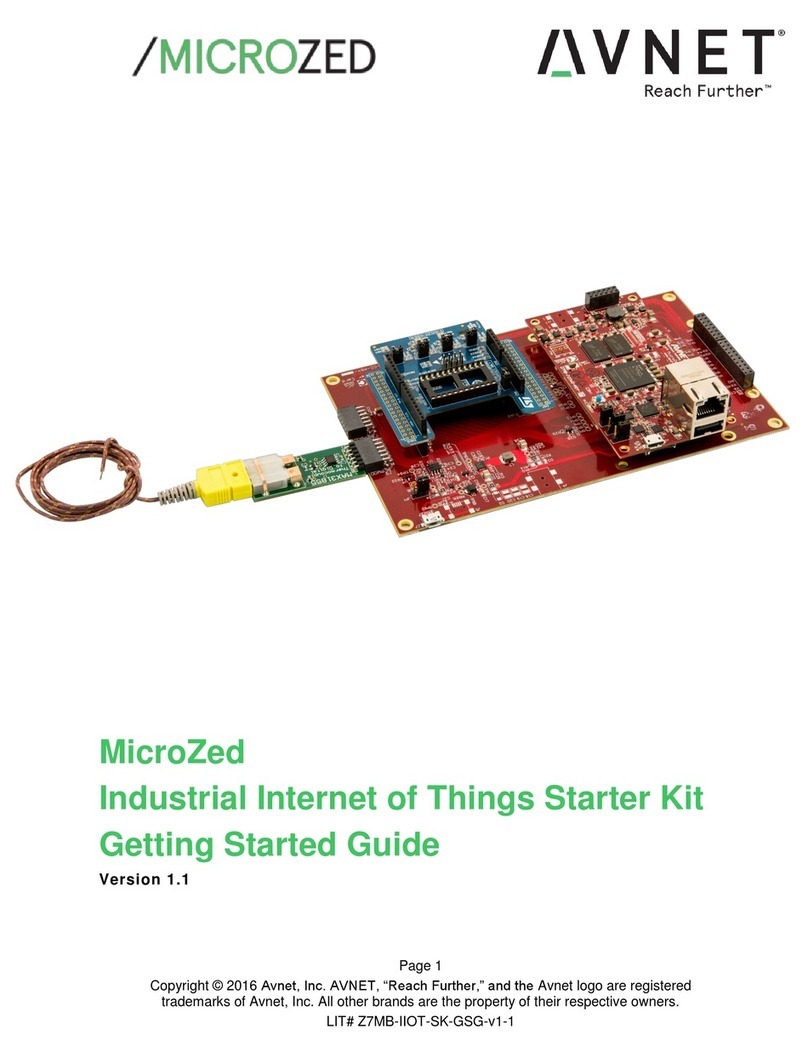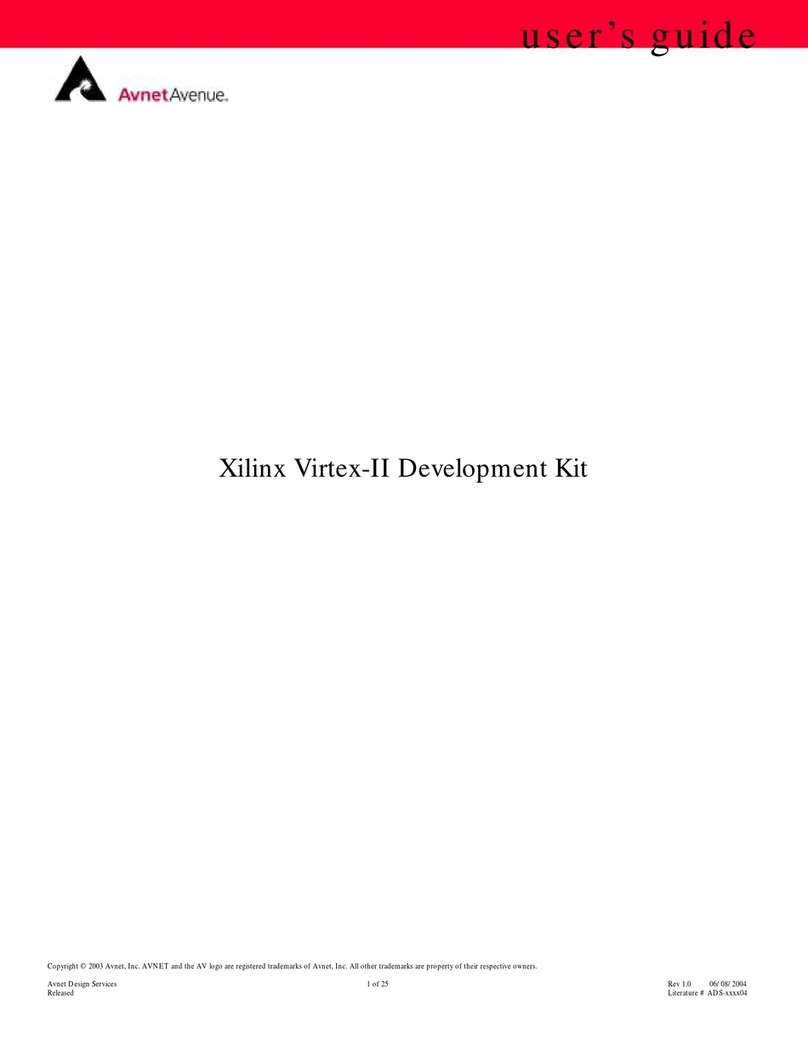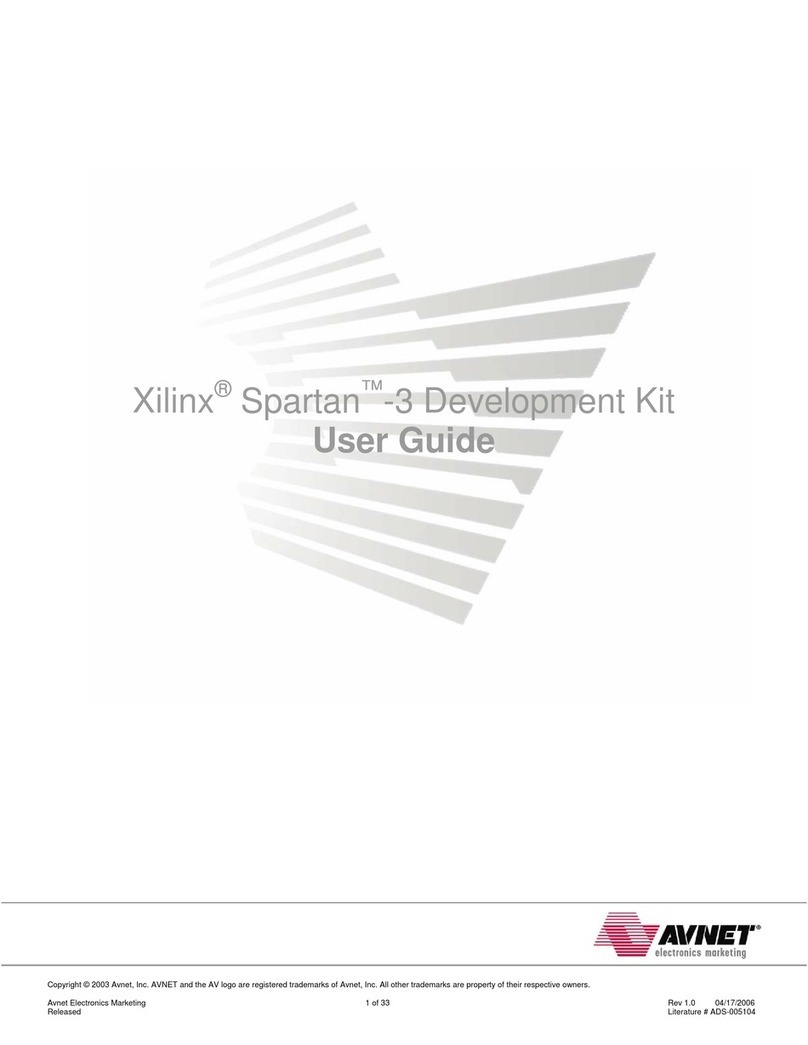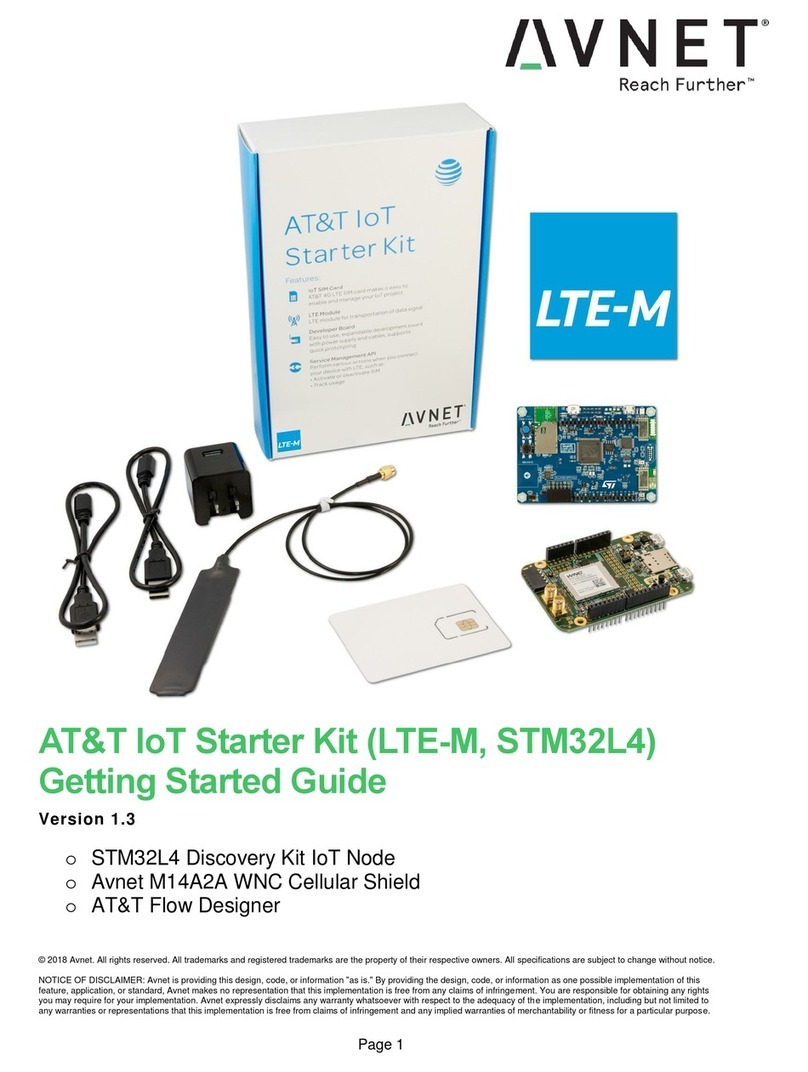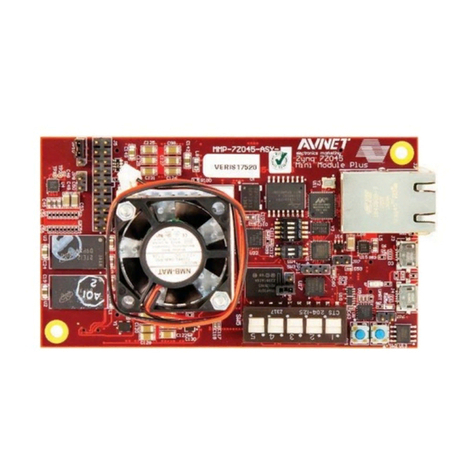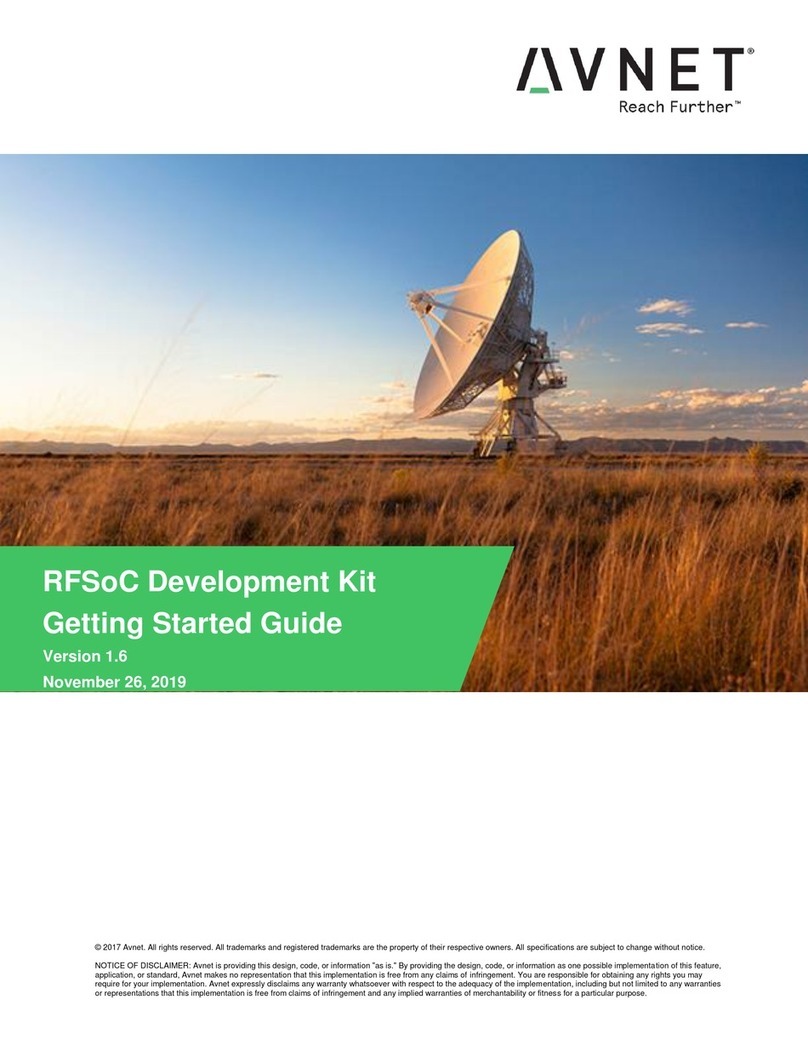
1 Introduction
The Telus LTE-M IoT Starter Kit integrates three boards (stacked via their Arduino connectors):
Avnet Quectel BG96 Shield (LTE Cat-M1 and NB-IoT cellular modem and GPS board)
STMicro NUCLEO-L496ZG MCU Board
STMicro X-NUCLEO-IKS01A2 Sensor Board
Enabled with the new Telus LTE-M IoT service plus free online development tools, product developers are
equipped with a versatile, rapid prototyping platform, for defining innovative new custom IoT products
The low-power Quectel BG96 IoT wireless module on this board is configured and operated via an
extensive set of AT commands. Mbed OS5 software examples are provided, enabling rapid application
development, using Mbed online IDE, libraries and software stacks (SSL, MQTT, COAP etc.)
The 2nd use-case of the BG96 Shield is a Pmod-connected modem peripheral, for host boards that support
a Pmod-compatible interface.
The 3rd use-case of the BG96 Shield is a USB-connected modem, supporting three serial ports (via USB):
UART1 - data transmission and AT command communication
UART2 - module debugging and log output
UART3 - output of GPS data / NMEA sentences
The power supplied to this board may be:
5V DC sourced from USB connector or Arduino shield connector, or
3.3V DC sourced from Pmod connector
VBAT from the battery connector
The provided wide-band LTE flex antenna, delivers good signal strength across multiple LTE frequency
bands. A passive GPS flex antenna is also provided
1.1 BG96 Module Features
Based on Quectel BG96 LPWA module
Multiple operating modes: Cat-M1, Cat-NB1, EGPRS
Global LTE bands support
oCat-M1/NB1: B1 B2 B3 B4 B5 B8 B12 B13 B18 B19 B20 B26 B28 B39 (B39 for M1 only)
oEGPRS: 850/900/1800/1900 MHz
Low Power Consumption
oApproximately 10 uA in PSM mode
GNSS (GPS, GLONASS, BeiDou/Compass, Galileo, QZSS)
VoLTE Voice over LTE support (M1 only. Not pinned-out on the BG96 Shield!)
PCM digital audio interface (Not pinned-out on the BG96 Shield!)
Connectors
oSIM Card holder
oArduino Shield interface
oPmod interface
Software
oModem and GPS support via AT Commands
oBuilt in support for PPP/TCP/UDP/SSL/TLS/FTP(S)/HTTP(S)
oSupport for major operating systems (Android, Linux, Windows)
oSupport for Mbed OS5 for integrated embedded development





